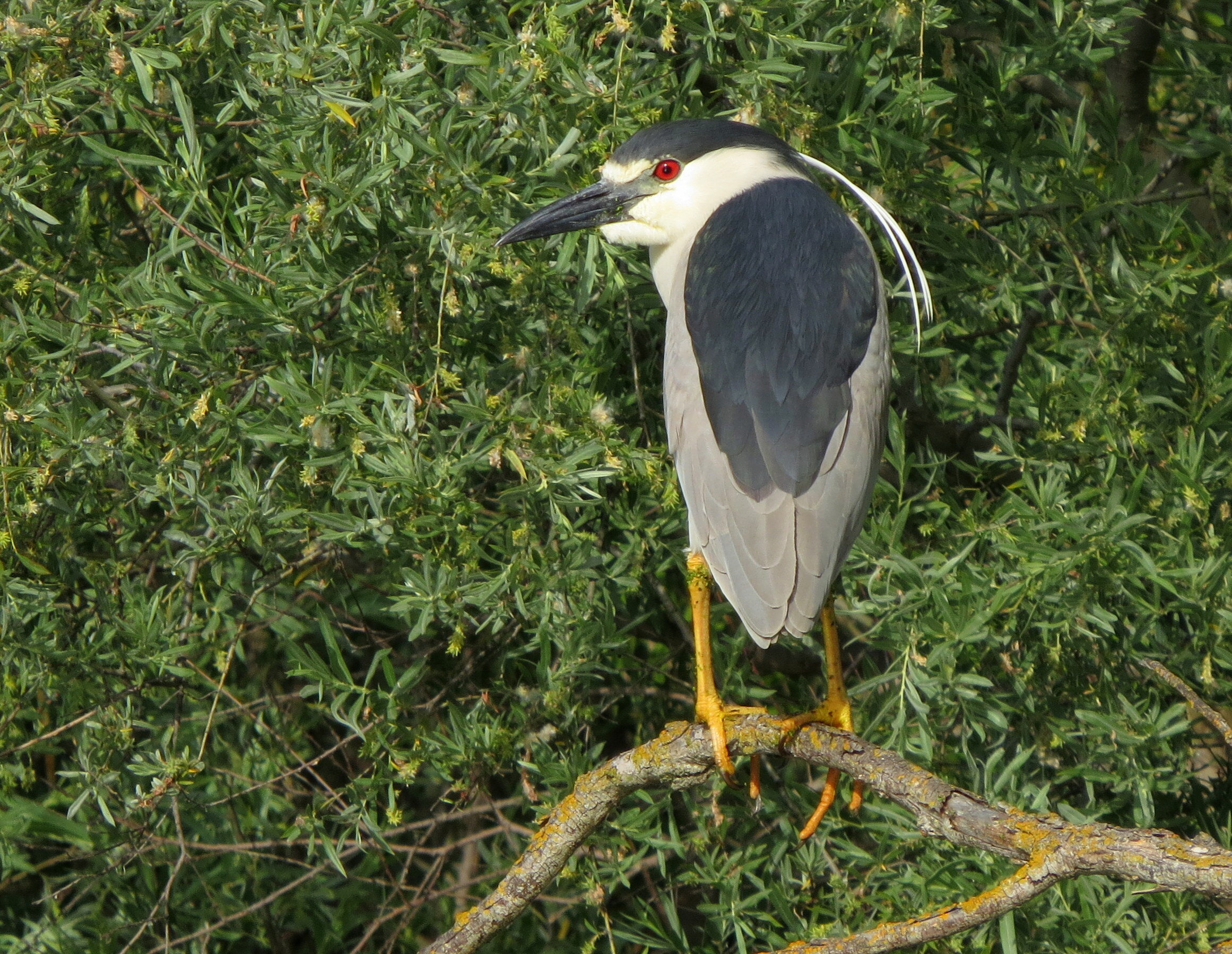This rookery is very active in spring with Great Egrets, Snowy Egrets, Cattle Egrets, Black-crowned Night-Herons, and occasionally Great Blue Herons nesting in a large stand of eucalyptus trees on private land.
Birding the site: The time to visit is from May into July (March and April for courting and nest building). About a quarter of a mile after turning onto Road 103, check the large stock pond on the left for nesting Gadwalls, Black-necked Stilts, Canada Geese, and Burrowing Owls on the island. Also check the surrounding fields and overhead for Swainson’s Hawks and along the overhead wires and fences for Loggerhead Shrikes, Blue Grosbeaks, and Western Kingbirds.
When you reach the rookery, the cacophony of bird squawks, quorks and cries will announce the birds before you leave your vehicle. Many egrets and herons can be seen flying to and from the rookery in all directions, and young in the nest (and occasionally on the ground) may be found in a variety of ages from just hatched to ready to leave the nest. In recent years, most of the trees have been thinned out, reducing available nest sites somewhat. eBird Sightings
Black-crowned Night-Herons, Image by Chris Conard
Directions: From the intersection of Interstate 5 and Hwy 50 in Sacramento, drive west on Hwy 50 for 3.4 miles to where Interstate 80 merges with Hwy 50. Continue west on Interstate 80 for about 4.0 miles across the Yolo Causeway and exit at East Chiles Road/Road 32A (exit 78). At the stop sign, turn left. In 1.9 miles, veer right, cross the railroad tracks, and go north (the road becomes Road 105) until it dead ends at Road 28H. Turn left on Road 28H, drive past the Yolo County Landfill, then turn right onto Road 103. The rookery is in a large tract of eucalyptus trees about 0.8 of a mile from Road 28H. This is a narrow, rural road, often traveled by large, wide farm machinery, so pull well off the road to park on the shoulder.
Maureen Geiger

